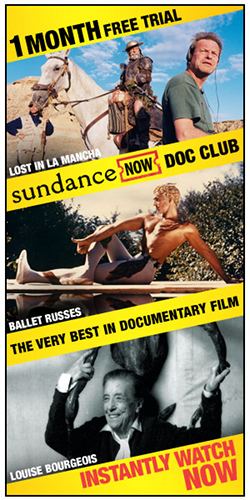Review: The Silent House (2010)
Cast: Florencia Colucci, Abel Tripaldi, Gustavo Alonso
Director: Gustavo Hernández
Country: Uruguay
Genre: Drama | Horror
Official Trailer: Here
Premiering at Sundance in January of 2011, the upcoming horror Silent House saw the light of day just eight months after the Uruguayan The Silent House, a quick-hash remake indicative of a sinister and troubling paradigm in Hollywood horror. Indeed, The Silent House has seen little to no release any form in North America; distributors snatched up the rights to the original and fast-tracked a reproduction so quickly that most viewers are not even aware that Silent House is a remake, let alone given the choice to decide for themselves which to watch. It’s a troubling embodiment of the buffer Hollywood has erected to separate the rest of the world from the American market and to capitalise upon the originality of foreign productions.
The great talking point of The Silent House is the much-touted technical aspect of its production: courtesy of a handheld digital camera, it becomes one of just a few films in the history of cinema to be presented in a single unbroken shot (in actuality, there is a brief post-credits epilogue that technically strips it off this achievement). Beginning in a sparse field, the shot follows the young Laura’s approach to an old rundown house to meet with her father Wilson, who has been hired to clear it out ahead of a sale. They have decided to stay there for the night in order to facilitate an early start on their work. The ensuing 78 minutes chronicles in real time the events that befell them, from the first strange sounds echoing from above to the final revelations of the evil that lurks within.
From a technical standpoint, The Silent House is a mesmeric achievement. As Hitchcock demonstrated to great effect in his underrated 1948 Rope, the long take creates an almost tangible tension, thrusting us into an empathetic experience with the slow dread of its characters as they fear discovery of a heinous crime.
 From a technical standpoint, The Silent House is a mesmeric achievement. As Hitchcock demonstrated to great effect in his underrated 1948 Rope, the long take creates an almost tangible tension, thrusting us into an empathetic experience with the slow dread of its characters as they fear discovery of a heinous crime. Cinema is an artistic medium embedded in a representation of the real; the unbroken shot is the perfect utilisation of this realism, sparing us the abstraction of a cut which would pull us from the film’s narrative. Applying the technique to a horror film is a masterstroke on the part of director Gustavo Hernández, who combines a typically bare and indiscriminate lighting scheme to elicit the innate fear of the unknown with which the greatest of horrors toy. Hernández coyly tracks his heroine’s movements through the darkened building as the creaks and groans of worn wood fill the soundtrack with an eerie oddity. When she disappears from the screen, it appears to frantically seek her out as though it—and we with it—are silent participants involved in the action ourselves, afraid to be alone in the dark.
From a technical standpoint, The Silent House is a mesmeric achievement. As Hitchcock demonstrated to great effect in his underrated 1948 Rope, the long take creates an almost tangible tension, thrusting us into an empathetic experience with the slow dread of its characters as they fear discovery of a heinous crime. Cinema is an artistic medium embedded in a representation of the real; the unbroken shot is the perfect utilisation of this realism, sparing us the abstraction of a cut which would pull us from the film’s narrative. Applying the technique to a horror film is a masterstroke on the part of director Gustavo Hernández, who combines a typically bare and indiscriminate lighting scheme to elicit the innate fear of the unknown with which the greatest of horrors toy. Hernández coyly tracks his heroine’s movements through the darkened building as the creaks and groans of worn wood fill the soundtrack with an eerie oddity. When she disappears from the screen, it appears to frantically seek her out as though it—and we with it—are silent participants involved in the action ourselves, afraid to be alone in the dark.
For all its effective building of tension, The Silent House is a considerable failure to match the potential of its form in its narrative. Applying a single take to a horror film was an inspired idea, but when entrusted to so dull and well-worn an idea as this it just goes wasted.
 Hernández’s direction efficiently present chills aplenty, from the simple panic of not knowing what is going on to the less inspired but still effective jump scares, chief among which are the moments wherein the camera “finds” Laura and we leap in fear of a sudden human shape in the darkened spatial void. Proficient though it may be in its visual presentation, however, The Silent House is fatally let down in terms of its narrative. The script by Oscar Estévez, with an alleged but unverified basis in real events, invests in a wealth of horror plot clichés that provokes more sighs of exasperation than genuine frights. It gradually transpires that Laura has more of a connection to this house than either she or we know; a history that stretches back into a dark past. Why she would not simply recall this is perhaps only a minor flaw, if even that, but the revelation of information is done in such an unoriginal fashion that it becomes frankly hard to care, and thus more difficult to be haunted by the ensuing events. For all its effective building of tension, The Silent House is a considerable failure to match the potential of its form in its narrative. Applying a single take to a horror film was an inspired idea, but when entrusted to so dull and well-worn an idea as this it just goes wasted.
Hernández’s direction efficiently present chills aplenty, from the simple panic of not knowing what is going on to the less inspired but still effective jump scares, chief among which are the moments wherein the camera “finds” Laura and we leap in fear of a sudden human shape in the darkened spatial void. Proficient though it may be in its visual presentation, however, The Silent House is fatally let down in terms of its narrative. The script by Oscar Estévez, with an alleged but unverified basis in real events, invests in a wealth of horror plot clichés that provokes more sighs of exasperation than genuine frights. It gradually transpires that Laura has more of a connection to this house than either she or we know; a history that stretches back into a dark past. Why she would not simply recall this is perhaps only a minor flaw, if even that, but the revelation of information is done in such an unoriginal fashion that it becomes frankly hard to care, and thus more difficult to be haunted by the ensuing events. For all its effective building of tension, The Silent House is a considerable failure to match the potential of its form in its narrative. Applying a single take to a horror film was an inspired idea, but when entrusted to so dull and well-worn an idea as this it just goes wasted.
The Silent House is simply too generic a horror plot to be anything of any great worth. Its form—and the grace with which its director handles it—elicits more scares than a great deal of its horror contemporaries, but there is nothing in the way of narrative weight to endear us to this character and reinforce the surface spookiness to provoke a real sense of harrowing terror. The technical innovation it brings to the genre earns it a role as a milestone in cinematic history, even if the final reveal in the narrative arguably overthrows the single shot’s impact as a dramatic device (and, key as such a reveal is, we can be sure the same issues will plague the remade Silent House). There is an efficient horror tension to The Silent House’s execution, but it’s all style and no substance, a new gimmick played out over the same old tropes.















 Review: The Samaritan (2012)
Review: The Samaritan (2012) DVD Review: We Were Here (2011)
DVD Review: We Were Here (2011) Review: Blood of My Blood (2011)
Review: Blood of My Blood (2011) Review: Damsels in Distress (2011)
Review: Damsels in Distress (2011) DVD Review: My Perestroika (2010)
DVD Review: My Perestroika (2010)

